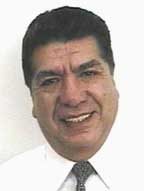Selected Works of Sergio Jiménez, MD, MACR
Modulation of TGF-β signaling by proinflammatory cytokines in articular chondrocytes
J A. Roman-Blas, Thomas Jefferson University; D G. Stokes, Thomas Jefferson University; and S. A. Jimenez, Thomas Jefferson University
DATE: December 2007
SOURCE: Osteoarthritis and Cartilage, 15(12):1367-1377
RELATED URL: http://dx.doi.org/10.1016/j.joca.2007.04.011
ABSTRACT:
Objective
The normal structure and function of articular cartilage are the result of a precisely balanced interaction between anabolic and catabolic processes. The transforming growth factor-beta (TGF-β) family of growth factors generally exerts an anabolic or repair response; in contrast, proinflammatory cytokines such as interleukin 1 beta (IL-1β) and tumor necrosis factor-alpha (TNF-α) exert a strong catabolic effect. Recent evidence has shown that IL-1β, and TNF-α, and the TGF-β signaling pathways share an antagonistic relationship. The aim of this study was to determine whether the modulation of the response of articular chondrocytes to TGF-β by IL-1β or TNF-α signaling pathways occurs through regulation of activity and availability of mothers against DPP (Drosophila) human homologue (Smad) proteins.
Methods
Human articular chondrocytes isolated from knee joints from patients with osteoarthritis (OA) or normal bovine chondrocytes were cultured in suspension in poly-(2-hydroxyethyl methacrylate)-coated dishes with either 10% fetal bovine serum media or serum-deprived media 6 h before treatment with IL-1β alone, TNF-α alone or IL-1β followed by TGF-β. Nuclear extracts were examined by electrophoretic mobility-shift assays (EMSA) for nuclear factor-kappa B (NF-κB) and Smad3/4 deoxyribonucleic acid (DNA) binding. Nuclear extracts were also subjected to the TranSignal Protein/DNA array (Panomics, Redwood City, CA) enabling the simultaneous semiquantitative assessment of DNA-binding activity of 54 different transcription factors. Nuclear phospho-Smad2/3 and total Smad7 protein expression in whole cell lysates were studied by Western blot. Cytoplasmic Smad7, type II collagen alpha 1 (COL2A1), aggrecan and SRY-related high mobility group-Box gene 9 (SOX-9) mRNA expression were measured by real-time polymerase chain reaction (PCR).
Results
The DNA-binding activity of Smad3/4 in the TranSignal Protein/DNA array was downregulated by TNF-α (46%) or IL-1β treatment (42%). EMSA analysis showed a consistent reduction in Smad3/4 DNA-binding activity in human articular chondrocytes treated with IL-1β or TNF-α. TGF-β-induced Smad3/4 DNA-binding activity and Smad2/3 phosphorylation were also reduced following pretreatment with IL-1β in human OA and bovine chondrocytes. Real-time PCR and Western blot analysis showed that IL-1β partially reversed the TGF-β stimulation of Smad7 mRNA and protein levels in TGF-β-treated human OA cells. In contrast, TGF-β-stimulated COL2A1, aggrecan, and SOX-9 mRNA levels were abrogated by IL-1β.
Conclusions
IL-1β or TNF-α exerted a suppressive effect on Smad3/4 DNA-binding activity in human articular chondrocytes, as well as on TGF-β-induced stimulation of Smad3/4 DNA-binding activity and Smad2/3 phosphorylation in human OA and bovine articular chondrocytes. IL-1β partially reversed the increase in TGF-β-stimulated Smad7 mRNA or protein levels suggesting that Smad7 may not be involved in the suppression of TGF-β signaling induced by IL-1β or TNF-α in articular chondrocytes. The balance between the IL-1β or TNF-α and the TGF-β signaling pathways is crucial for maintenance of articular cartilage homeostasis and its disruption likely plays a substantial role in the pathogenesis of OA.

